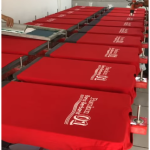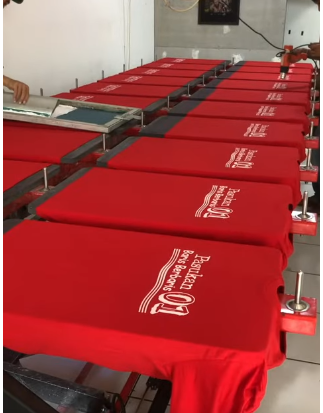Screen printing has evolved with innovative inks designed for durability and ease of use. Among these, Skip Marsh Plastisol Ink stands out as a trusted choice for vibrant, long-lasting designs. This article explores everything you need to know about this remarkable ink, from its features and benefits to tips for optimal use. Whether you’re a seasoned professional or a beginner, you’ll find valuable insights to enhance your screen-printing projects.
Contents
- 1 What Is Skip Marsh Plastisol Ink?
- 2 Why Is Skip Marsh Plastisol Ink Popular in Screen Printing?
- 3 Key Features of Skip Marsh Plastisol Ink
- 4 Benefits of Using Skip Marsh Plastisol Ink
- 5 Important Tips for Using Skip Marsh Plastisol Ink
- 6 Common Issues and Solutions
- 7 When to Choose Skip Marsh Plastisol Ink
- 8 Conclusion
- 9 FAQs
What Is Skip Marsh Plastisol Ink?
Skip Marsh Plastisol Ink is a high-performance ink widely used in the screen-printing industry. It is known for its thick consistency, vibrant colors, and exceptional durability. Unlike water-based inks, plastisol inks do not dry during printing, allowing for extended work sessions without interruptions.
Why Is Skip Marsh Plastisol Ink Popular in Screen Printing?
Skip Marsh Plastisol Ink has gained popularity for several reasons:
- Vivid Colors: Produces eye-catching designs with vibrant, fade-resistant hues.
- Durability: Withstands multiple washes without cracking or fading.
- Ease of Use: Doesn’t dry on screens, ideal for long print runs.
- Versatility: Suitable for various fabrics, including cotton and polyester.
Key Features of Skip Marsh Plastisol Ink
- Thick Consistency: Ensures solid and opaque prints.
- Customizable Curing: Heat-curing allows for adjustable finishes.
- Mixable Colors: Easily create custom shades by mixing different inks.
- No Screen Drying: Reduces interruptions during printing.
Benefits of Using Skip Marsh Plastisol Ink
1. Long-Lasting Prints
Skip Marsh Plastisol Ink creates prints that endure heavy use and frequent washing, maintaining their vibrant appearance.
2. Beginner-Friendly
Its slow-drying nature makes it ideal for newcomers, providing ample time to work without worrying about ink drying on the screen.
3. High Opacity
Perfect for printing on dark or light fabrics, its opacity eliminates the need for multiple layers.
4. Versatile Application
Compatible with both manual and automatic presses, making it a great option for projects of any scale.
Important Tips for Using Skip Marsh Plastisol Ink
To achieve the best results with Skip Marsh Plastisol Ink:
- Heat Curing: Ensure curing at 320-330°F for optimal adhesion and durability.
- Preheat Fabrics: Eliminate moisture before printing for smoother application.
- Proper Screen Tension: Maintain even screen tension to avoid uneven prints.
- Use Plastisol Cleaners: Prevent ink residue from staining screens over time.
Common Issues and Solutions
1. Ink Cracking
This occurs when the ink isn’t cured properly. Use a heat gun or flash dryer to ensure correct curing temperatures.
2. Bleeding on Synthetics
Prevent bleeding by testing inks on synthetic fabrics and applying an underbase layer.
3. Screen Staining
Use dedicated plastisol cleaners to remove ink residue and extend screen life.
When to Choose Skip Marsh Plastisol Ink
Choose Skip Marsh Plastisol Ink if:
- You’re printing on cotton, polyester, or blends.
- You need long-lasting, vibrant prints.
- Your projects involve medium to large print runs.
For smaller runs or items needing breathability, water-based inks may be more suitable.
Conclusion
Skip Marsh Plastisol Ink is a game-changer in screen printing. Its durability, vibrant colors, and user-friendly nature make it an excellent choice for professionals and beginners alike. By following best practices for application and curing, you can create stunning, resilient prints every time.
FAQs
1. What is the ideal curing temperature?
Cure Skip Marsh Plastisol Ink at 320-330°F for best results.
2. Can it be mixed with other inks?
Yes, mix it with other plastisol inks to create custom colors.
3. Is it safe for all fabrics?
It works best on cotton and polyester; test before using on synthetics.
4. How do I clean screens after use?
Use plastisol-specific cleaners for thorough cleaning and to prevent stains.
5. Does it require a heat press?
Yes, heat curing is essential for setting the ink properly.
By incorporating Skip Marsh Plastisol Ink into your projects, you’ll achieve vibrant, professional-quality prints that stand the test of time.











